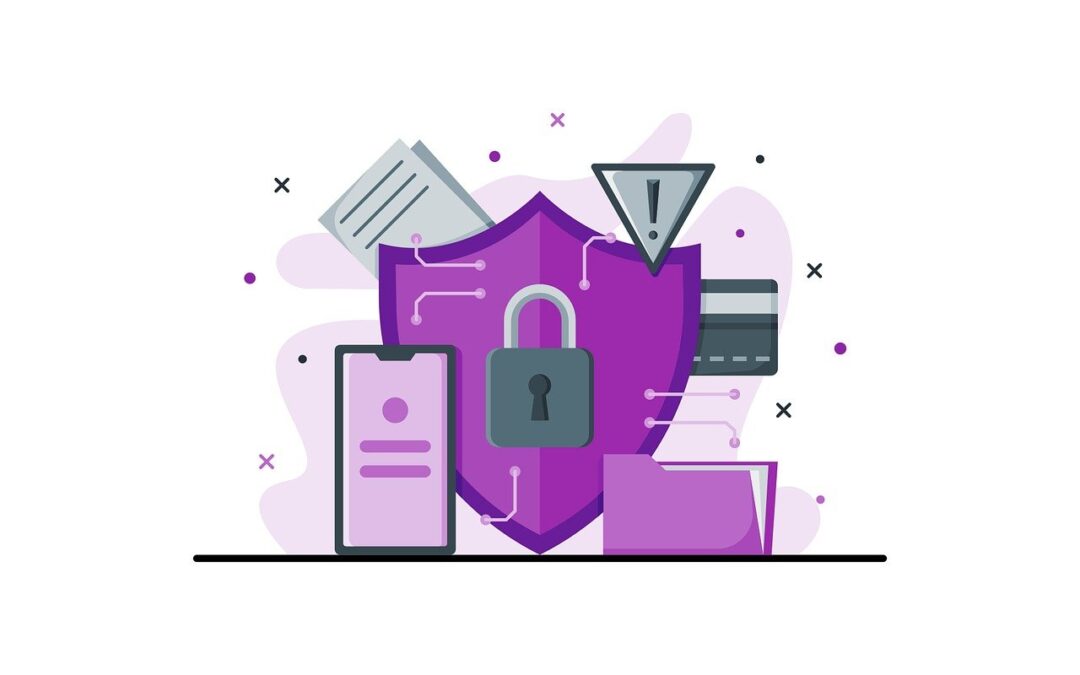
by Andrew Shone | Sep 30, 2025 | Business, Newsfeed
Nothing disrupts your workday quite like unreliable Wi-Fi. One moment everything’s running smoothly, and the next, video calls freeze, files won’t upload, and the team struggles to meet deadlines because everything’s slowed down. Being stuck in this situation is exhausting, killing productivity, and impacting the entire business.
When slowdowns start happening regularly, frustration quickly builds. But here’s the good news: most businesses don’t need to overhaul their entire system. Usually, just a few smart tweaks to your network can bring your connection back to life.
You don’t need a big IT team to make a real difference. By working with the right IT partners, you can pinpoint what’s slowing down your network, make smart upgrades, and turn your slow Wi-Fi into a fast, reliable system your team can count on every day.
Why Stable Connection Is Essential for Your Business
These days, everything we do at work depends on the internet, including:
- Video meetings
- Cloud-based apps
- Real-time messaging
- Smart devices like printers or coffee machines
Slow connections are not just an inconvenience; they slow down your entire workflow. A reliable and fast network is no longer a luxury, but the foundation of a productive workplace.
Check These 6 Signs to Know If Your Network Needs Help
Curious about how your network is really performing? These six factors will give you a clear picture:
- Speed: Can your team upload, download, and stream without delays?
- Lag: Notice a delay between clicking and things happening? That’s a lag.
- Dropouts: If your Wi-Fi signal keeps cutting out, that’s a problem.
- Jitter: On calls, if voices sound garbled or video stutters, jitter is likely to blame.
- Coverage: Dead zones around the office? You may need more access points.
- Security: Unknown devices connecting? That’s a red flag for performance and safety.
8 Smart Tips to Boost Your Network’s Performance
If your connection keeps freezing during important client meetings or it takes too long to download apps, it can seriously hurt your business’s revenue and reputation if it goes on.
Here are eight ways to optimize your network performance:
1. Upgrade Your Hardware
If your router or firewall is several years old, it might be time for an upgrade. Outdated equipment can slow down even the fastest internet plans.
Invest in equipment that can handle today’s demands and grow with you down the line.
2. Give Priority to What Matters Most
Ever notice how streaming Netflix can disrupt your Zoom call? That’s where Quality of Service (QoS) comes in, it prioritizes important traffic like video and phone calls, ensuring they get the bandwidth they need first.
3. Divide Your Networks
Think of it like creating separate lanes to avoid traffic jams. By dividing your network into smaller segments, you reduce congestion and boost security. If one segment goes down, the others keep running, so you can maintain operations. It also helps different departments work efficiently without interfering with each other.
4. Balance Server Load
By balancing server load, you share workload across servers, so nothing gets overloaded. It keeps systems running smoothly during busy times and helps your team stay productive without delays.
5. Adjust Your Setup for Efficiency
Sometimes slow internet is simply a matter of settings. Make sure to regularly check your router, switch, and firewall. Using network monitoring tools can help you quickly identify and fix any problems.
6. Watch for Threats Before They Slow You Down
An Intrusion Detection System (IDS) keeps an eye out for unusual activity that might be slowing down your network. If someone tries to sneak in or overload your system, you’ll catch it early, before it turns into a bigger problem. It quietly works behind the scenes, protecting your system and keeping your connection steady.
7. Build in a Backup Plan
Having a backup internet connection or extra equipment means your team can keep working, even if something goes down. There’s no need to sit around waiting for the internet to come back. It’s a simple, budget-friendly solution that small businesses can put in place easily, keeping you prepared for slowdowns or unexpected issues.
8. Tune Up Your Protocols
Not all businesses use the same kind of internet traffic. If your network protocols are outdated or poorly configured, they can slow everything down. Updating them to better manage data flow can make a significant difference, especially for businesses that rely on real-time data, like customer service, trading, or e-commerce.
Ready for a Real Fix? Call in the Pros
You’ve got more important things to do than deal with dropped signals or choppy calls, and that’s where we can help.
We’ll make sure your network runs smoothly and stays free from interruptions. Whether you’re managing complex operations or leading a large team, we’ll help you build a Wi-Fi network that’s fast, secure, and reliable.
Here’s what we have to offer:
- Clean, modern hardware setups
- Smarter configurations tailored to your needs
- Proactive security and support
- Solutions that scale as you grow
We don’t make quick fixes; we do it right. Let us take the pressure off. Contact us today, and we’ll help turn your slow, unreliable network into one your team can count on, so you can stay focused, work faster, and keep things moving forward.
—
Featured Image Credit
This Article has been Republished with Permission from The Technology Press.

by Andrew Shone | Sep 25, 2025 | New Technology, Newsfeed
In the past, teams relied on sticky notes and endless email threads to manage tasks. But with today’s hybrid work environments and fast-moving deadlines, that approach just doesn’t cut it anymore. Effective project management is now essential to stay on track and ahead.
According to McKinsey, the average worker spends 28% of their week managing email and nearly 20% just hunting for information or colleagues to help.
This article introduces Microsoft Planner, a versatile tool that’s just as effective for simple task management as it is for complex enterprise projects. It’s easy to get started with, yet powerful enough to keep multiple projects organized and on track. With a bit of guidance from an IT partner experienced in supporting small teams, Planner can transform the way you organize, collaborate, and deliver results.
Teams Wasting Time on Endless Emails and Missed Tasks
When tasks are not properly organized, it’s hard to monitor your team’s progress:
- Team members cannot keep up with deadlines
- Essential details are missed through conversations.
- Projects stall over small miscommunications
- Managers struggle to get a complete overview.
These things get in the way of productivity and make it harder for your team to stay motivated and move forward.
A Simple Way to Manage Tasks
Microsoft Planner brings everything together in one place, making it simple and intuitive for small teams to jump in and start using right away. Here’s how Planner helps you stay productive:
1. Organized Task Boards
Think of Planner like a shared to-do board where your whole team can carry out the following:
- Create tasks quickly
- Assign responsibilities
- Add due dates, checklists, files, and notes
- Move tasks through stages like To Do > In Progress > Done
This organized view allows everyone to stay on track without the need for long email threads or disappearing messages.
2. Flexible Views for Better Oversight
Planner offers multiple ways to help you track your work, including:
- Board View: Tasks are displayed as cards grouped in columns (buckets). You can drag and drop tasks to update their status or move them between buckets. Great for visual task management.
- Grid View: A list-style layout showing tasks with details like due dates, assignees, and progress. Useful for quick scanning and editing.
- Schedule View: Displays tasks on a calendar by week or month. You can drag tasks onto the calendar or view unscheduled tasks separately.
- People View: Displays workload distribution across team members.
- Timeline View: A Gantt-style chart that shows how tasks connect, and which ones are key to keeping the project on track.
- Assignments View: Gives you detailed control over how much effort tasks take and when they’re scheduled.
These views help teams at every stage, from daily task completion to big-picture planning.
3. Task Details That Keep Teams on Track
Every task in Planner comes with all the details you need. Just click on a task to:
- Set start and end dates
- Assign priorities and include checklists
- Attach files and assign responsibility
- Set dependencies to ensure tasks are completed in the correct order
- Link to relevant Teams channels for context and collaboration
This makes sure nothing important falls through the cracks and keeps conversations right where they belong.
4. Templates Save You Time
Why start from scratch when you don’t have to? Planner offers ready-made templates, some are available in the free version, while more are available in paid plans. Just pick a template, customize it, and you’re ready to go. It’s a quick way to launch projects without reinventing the wheel.
5. Smooth Integration with Microsoft 365
Planner isn’t a standalone app; it’s designed to work seamlessly with the tools you already use. Here’s what it integrates with:
- Teams: Create and assign tasks right from chat or channels.
- Outlook: Turn flagged emails into actionable tasks.
- SharePoint and Loop: Embed Planner tabs in project sites for seamless updates.
- Power Platform: Automate repetitive workflows with Power Automate.
- Excel and Power BI: Export data to analyze tasks, timelines, and workloads.
- Viva Goals: Align tasks with company-wide objectives.
With everything linked together, you gain clarity, reduce friction, and create real momentum.
6. Built-In AI to Supercharge Efficiency
In July of 2024, Microsoft added Copilot to Planner, which helps you with the following:
- Summarize tasks and plans.
- Create tasks or subtasks using natural language.
- Get progress updates and reminders automatically.
Microsoft’s new Project Management Agent goes further, analyzing goals, breaking work into tasks, and even suggesting who should handle them. These helpers free your team to focus on creative work, not mundane task management.
How to Get Started with Planner
Step 1: Open Planner in Teams or the web app.
Step 2: Choose “New Plan” and pick a template.
Step 3: Build your board. Add buckets and tasks and assign people.
Step 4: Customize each task with dates, checklists, attachments, and links.
Step 5: Explore views to track daily work and overall progress.
Step 6: Automate reminders or notifications.
Step 7: Invite your team and walk them through the basics.
It’s an easy, step-by-step setup that helps your team start collaborating quickly and smoothly.
What You’ll Gain
With Microsoft Planner small businesses gain many benefits including reducing email overload and meeting grind, keeping everyone accountable and aligned, and being able to visualize project progress easily. You’ll also be able to launch new initiatives faster, use AI to save time and reduce manual effort, and connect tasks with the tools your team already uses.
This keeps your projects moving and gives you more time to focus on your customers.
What Happens If You Don’t Act?
When tasks are scattered and tools don’t connect, problems are bound to happen. You’ll be more apt to miss deadlines, employees will be confused about who’s responsible for what, and team members will feel overloaded and overworked.
Wasted time in meetings and poor visibility on project status will slow your business down and waste money.
Make Planning a Habit, Not a Hassle
Planner is more than just a tool, it keeps your team organized, on track, and connected, without the hassle of scattered tasks or missed updates.
We’re here to help you every step of the way. From setup to confident use, we’ll tailor Microsoft Planner to fit your team’s unique needs. Let’s simplify project management together, schedule your consultation today.
—
Featured Image Credit
This Article has been Republished with Permission from The Technology Press.

by Andrew Shone | Sep 20, 2025 | Cybersecurity, Newsfeed
Your office thermostat, conference room speaker, and smart badge reader are convenient, but they’re also doors into your network. With more devices than ever in play, keeping track can be tough, and it only takes one weak link to put your entire system at risk.
That’s why smart IT solutions matter now more than ever. A trusted IT partner can help you connect smart devices safely, keep data secure, and manage your whole setup without stress.
Here’s a practical guide designed for small teams getting ready to work with connected tech.
What is IoT?
IoT, or the Internet of Things, is all about physical devices, like sensors, appliances, gadgets, or machines, being connected to the internet. These smart tools can collect and share data, and even act on their own, all without needing someone to constantly manage them. IoT helps boost efficiency, automate tasks, and provide useful data that leads to smarter decisions for both businesses and individuals. But it also comes with challenges, like keeping data secure, protecting privacy, and keeping track of all those connected devices.
Steps To Manage IoT Security Risks for Small Businesses
1. Know What You’ve Got
Begin with all of your network’s smart devices, such as cameras, speakers, printers, and thermostats. If you are not aware of a gadget, you cannot keep it safe.
- Walk through the office and note each gadget
- Record model names and who uses them
With a clear inventory, you’ll have the visibility you need to stay in control during updates or when responding to issues.
2. Change Default Passwords Immediately
Most smart devices come with weak, shared passwords. If you’re still using the default password, you’re inviting trouble.
- Change every password to something strong and unique
- Store passwords securely where your team can consistently access them
It takes just a minute, and it helps you avoid one of the most common rookie mistakes: weak passwords.
3. Segment Your Network
Let your smart printer talk, but don’t let it talk to everything. Use network segmentation to give each IoT device space while keeping your main systems secure.
- Create separate Wi-Fi or VLAN sections for IoT gear
- Block IoT devices from accessing sensitive servers
- Use guest networks where possible
Segmented networks reduce risk and make monitoring easy.
4. Keep Firmware and Software Updated
Security flaws are found all the time, and updates fix them. If your devices are out of date, you’re wide open to cyberattacks.
- Check for updates monthly
- Automate updates when possible
- Replace devices that are no longer supported
Even older gadgets can be secure if they keep receiving patches.
5. Monitor Traffic and Logs
Once your devices are in place, watch how they talk. Unexpected activity could signal trouble.
- Use basic network tools to track how often and where devices connect
- Set alerts for strange activity, like a badge reader suddenly reaching the internet
- Review logs regularly for odd patterns
You don’t need an army of security experts, just something as simple as a nightly check-in.
6. Set Up a Response Plan
Incidents happen; devices can fail or malfunction. Without a plan, every problem turns into a major headache. Your response plan should include:
- Who to contact when devices act weird
- How you’ll isolate a problematic device
- Available standby tools or firmware
A strong response plan lets you respond quickly and keep calm when things go wrong.
7. Limit What Each Device Can Do
Not every device needs full network access. The key is permission controls.
- Turn off unused features and remote access
- Block internet access where not needed
- Restrict device functions to exact roles only
Less access means less risk, yet your tools can still get the job done.
8. Watch for Devices That Creep In
It’s easy to bring in new devices without thinking of security risks, like smart coffee makers or guest speakers.
- Have a simple approval step for new devices
- Ask questions: “Does it need office Wi-Fi? Does it store data?”
- Reject or block any gear that can’t be secured
Catching these risks early keeps your network strong.
9. Encrypt Sensitive Data
If your smart devices transmit data, ensure that data is encrypted both during transmission and while stored.
- Check device settings for encryption options
- Use encrypted storage systems on your network
Encryption adds a layer of protection without slowing things down.
10. Reevaluate Regularly
It’s easy to secure your office tech once and assume it stays that way. But tech changes fast, and so do threats.
- Do a full check-in every six months
- Reassess passwords, network segments, and firmware
- Replace devices that don’t meet today’s standards
With a regular schedule, you keep ahead without overthinking it.
Why This Actually Matters
Smart devices simplify work but can pose risks if not properly secured. More businesses are experiencing cyberattacks through their IoT devices than ever before, and these attacks are rising rapidly. Protecting your systems isn’t about expensive high-tech solutions, it’s about taking simple, smart steps like updating passwords, keeping devices up to date, and knowing what’s connected.
These simple steps can protect your business without getting in the way. Plus, with the right IT support, staying ahead of threats is simpler than you might expect.
Your Office Is Smart, Your Security Should Be Too
You don’t need to be a cybersecurity expert to protect your small office. As more smart devices like printers, thermostats, and security cameras connect to your network, hackers have more opportunities to get in. The good news? Keeping your space secure doesn’t have to be complicated or costly.
With the right IT partner who understands the unique challenges small businesses face, you can take simple steps to protect what matters. Ready to get serious about IoT security? Contact us today and partner with a team that protects small offices, without the big-business complexity.
—
Featured Image Credit
This Article has been Republished with Permission from The Technology Press.

by Andrew Shone | Sep 15, 2025 | Business, Newsfeed
Without realizing it, technology can drain your business budget. One day, everything seems manageable, and the next, you’re left wondering where all these unexpected costs are coming from. Expenses pile up quickly and become tough to track. Whoever said running a business would be easy?
Here’s the good news: you don’t need to spend thousands on a large in-house IT team or become an IT expert yourself. The best approach is to partner with an IT specialist who can help you manage your IT costs. With their strategic planning and focus, your IT budget will work for you, not against you. This guide is designed to help you better understand IT expense planning.
Strategic Ways to Plan Your Business’s IT Expenses
Step 1: Be Aware of Your Business Expenses
Take some time to figure out what you are paying for and how it will benefit you. Ask yourself:
- What equipment is your team using daily?
- How many software tools do you actually use?
- Are there overlapping features between tools?
- Are you still being charged for a subscription from 2021?
Sometimes, you do not need to spend a penny and just clean things up. This is why having a good understanding of your business expenses is key.
Step 2: Spend Where It Actually Helps
There’s a difference between spending and investing. Buying gadgets because they’re shiny? That’s spending. Putting money into tools that make your work easier, faster, or safer? That’s investing.
Here’s where you usually get the most bang for your buck:
- Cybersecurity: A basic firewall or antivirus can protect you from a major breach which is much less expensive than dealing with recovery.
- Cloud tools: Let your team work from anywhere and save on server headaches.
- Automation: Let software manage repetitive tasks so that your team saves time.
- Training: This is crucial because there’s no point in investing in a new tool if your team can’t use it effectively.
Step 3: Give Your Budget a Backbone
Lumping all IT costs into one big bucket makes it hard to tell what’s working and what’s not. Instead, break down your expenses into clear categories such as:
- Hardware: Laptops, monitors, routers, and all the equipment your business cannot operate without.
- Software: Every subscription and tool your team relies on.
- Security: VPNs, password managers, and antivirus software.
- Support: Who do you call when something breaks?
- Training: Helping your team learn the tech they’ve got.
- Backups: Peace of mind because technology can fail.
Now you’re not just budgeting, but building a system you can track and improve.
Step 4: Trim What You Don’t Need
Remember that dusty treadmill in your garage that hasn’t been used since New Year’s? Your IT budget probably has a few forgotten expenses just like that.
Here’s how to clean it up:
- Cancel unused subscriptions: If no one’s logged in for 3 months, it’s probably safe to let it go.
- Consolidate tools: One solid platform might replace three mediocre ones.
- Renegotiate with vendors: A five-minute call could save you hundreds a year.
- Outsource smartly: Hiring full-time IT staff isn’t always necessary. A managed IT partner can often do more, for less.
This doesn’t mean settling for less, it means getting rid of the things you no longer need.
Step 5: Allow for Flexibility
Your budget should adapt to your needs without breaking under pressure:
- Keep backups in place for emergencies.
- Update your budget every quarter.
- Assess which expenses add value versus those that don’t.
A good IT budget is like a good pair of jeans. It fits now, but stretches a little when you need it .
Step 6: Plan for the Future, Not Just Today
It’s easy to budget just for what’s in front of you, but what happens when you hire two new people or move to a bigger office?
- Will you need more licenses or storage next quarter?
- Are you opening a new location?
- Planning to go remote or hybrid?
If growth is part of your plan, your IT budget should reflect that too.
Step 7: Don’t Do It Alone
You don’t have to be a tech expert when you have one on your side. A great IT partner helps you stay organized, cut unnecessary costs, and keep everything running smoothly. They understand your systems, communicate clearly, and make it easy for you to stay ahead of issues instead of scrambling to fix them. It’s smart, hassle-free support.
Always Budget for a Plan B Just in Case
Things don’t always go as planned. Maybe your internet drops during a big meeting. Maybe a laptop decides today’s the day it won’t turn on. That’s why it’s smart to build in a safety net. A second internet line or a spare device can keep you moving when things get bumpy. It’s like keeping a backup charger in your bag. Most days, you won’t need it. But when you do, you’ll thank yourself. A little prep now can save a lot of panic later.
Smart Budgeting: Make Every Tech Dollar Count
Building a better IT budget isn’t just about slashing costs. It’s more than merely spending less. It’s about knowing where your money goes and making sure it supports your business goals.
When you know which tools truly add value and eliminate the rest, everything runs more smoothly. You create room to grow and build a setup that supports your business instead of holding it back.
Still not sure where to start? We’ll help you streamline your IT expenses, eliminate unnecessary costs, and create a plan aligned with your business goals. IT budgeting doesn’t have to be overwhelming. We’ll make it simple. Contact us today.
—
Featured Image Credit
This Article has been Republished with Permission from The Technology Press.

by Andrew Shone | Sep 10, 2025 | Business, Newsfeed
Nobody builds a house on a weak foundation, so why operate your business based on unreliable data?
According to research, bad data costs US firms over $3 trillion every year, and roughly 40% of company goals fail as a result of inaccurate information.
Data is everywhere, and if you are not utilizing it to your advantage, you are missing out. It is found in emails, customer profiles, inventory systems, or basically throughout your entire workflow. But relying on outdated or inaccurate information can lead to confusion, slow down your team, and ultimately cost you a lot of money.
Here’s the good news: you don’t need an entire IT department to manage your data effectively. With the right IT partner and a few simple steps, you can keep everything clean and running smoothly.
Why Good Data Is Key
It is challenging to run a small business, and bad data makes things worse. With accurate data, you can make smarter decisions, satisfy customers, and run your operations more efficiently, as a result, boosting sales and benefiting your company without wasting resources.
You might be wondering, isn’t that the same as data integrity? Actually, no. Data integrity focuses on protecting data from leaks or corruption, it’s more about security and ensuring records stay safe and intact.
Data quality means your information is accurate and useful. It helps you make smart decisions, while data integrity protects the data you rely on.
What Makes Data “High Quality”?
It is simple. If your data ticks these boxes, you’re already on the right path:
1. It’s Accurate
Your data reflects what is going on in the real world. This means it should be free of errors such as spelling mistakes, inaccurate invoices, or old contact information.
2. It’s Complete
All the pieces are there. No half-filled forms or missing phone numbers. Incomplete data often leads to guesswork, which slows everyone down.
3. It’s Current
Outdated data can be worse than no data at all. Relying on last year’s sales trends to guide this month’s decisions can quickly lead to problems.
4. It’s Consistent
If a customer’s name is spelled three different ways across your systems, it creates confusion. Clean data looks the same, wherever it lives.
5. It’s Unique
Duplicates skew results. You don’t want “Bob Smith” entered five times with five different emails. One record per person. Simple.
6. It’s Useful
Your data should be just detailed enough to help you, no more, no less. Too much unnecessary information makes it harder to spot what really matters.
What Happens If You Ignore Data Quality?
Let’s say you’re preparing for a big email campaign. If your list is filled with old addresses, spelling mistakes, or duplicate contacts, your open rates tank, and your reputation with email providers suffers.
Or imagine your team keeps delivering orders to the wrong location because the customer’s info hasn’t been updated. That’s time, money, and trust gone.
Here’s the thing: fixing these issues after they happen requires far more effort than preventing them from occurring in the first place.
7 Simple Ways to Keep Your Business Data Clean
1. Decide What Info Actually Matters
Identify the key data that keeps your business running smoothly, like customer contacts, order details, or payment terms. Then, create simple guidelines your team can easily follow. When everyone uses the same format, it keeps things organized without making it complicated.
2. Show Your Team the Right Way to Do It
Most data errors occur when people aren’t sure what’s expected of them. Rather than overwhelming your team with lengthy manuals, provide a simple, clear guide. How should names be formatted? What’s the correct way to enter addresses? A brief, straightforward session without jargon can make a big difference in maintaining consistency.
3. Tidy Things Up Often
Don’t wait too long to clean up your data. A quick monthly review helps you spot duplicates, fix mistakes, and update old info before it creates bigger issues.
4. Use Smart Tools to Prevent Errors
Some mistakes can be caught the moment they happen. You just need the right tools:
- Use form validations so emails, dates, and numbers follow the right format.
- Make certain fields required, like phone numbers or email addresses.
- If your CRM allows it, set up automatic checks for common errors.
5. Give Your Team a Way to Flag Issues
Your staff are often the first to notice when something’s off. If names are getting mixed up or records are incomplete, they should feel comfortable pointing it out. Create a simple way for them to flag these problems and help fix them before they grow.
6. Keep Your Documentation Updated
Things change fast with new systems, tools, and team members. That’s why it helps to keep a simple note on where your data comes from, who handles it, and how it should be used.
7. Watch a Few Key Metrics
You don’t need to track everything. Just keep an eye on a few key things:
- Are there a lot of duplicates showing up?
- Are important fields being left blank?
- How accurate is your customer info?
Quick checks once a month will help you stay ahead of any issues.
Don’t Let Data Be the Thing Holding You Back
You don’t need a complete system overhaul, just a few smart adjustments. Begin by cleaning up your existing data, setting some simple rules, and reaching out for help when it matters most. That’s where we come in. We help small teams like yours get your data organized without the hassle.
Better data means smoother workdays, clearer decisions, and happier customers. Ready to stop wasting time on messy info? Reach out today and let’s get your data back on track.
—
Featured Image Credit
This Article has been Republished with Permission from The Technology Press.

by Andrew Shone | Sep 5, 2025 | Cybersecurity, Newsfeed
Have you ever seen a video of your favorite celebrity saying something outrageous? Then later, you find out it was completely fabricated? Or perhaps you’ve received an urgent email seemingly from your boss. But something felt off.
Welcome to the world of deepfakes. This is a rapidly evolving technology that uses artificial intelligence (AI). It does this to create synthetic media, often in the form of videos or audio recordings. They can appear real but are actually manipulated.
People can use deepfakes for creative purposes. Such as satire or entertainment. But their potential for misuse is concerning. Deepfakes have already made it into political campaigns. In 2024, a fake robocall mimicked the voice of a candidate. Scammers wanted to fool people into believing they said something they never said.
Bad actors can use deepfakes to spread misinformation. As well as damage reputations and even manipulate financial markets. They are also used in phishing attacks. Knowing how to identify different types of deepfakes is crucial in today’s world.
So, what are the different types of deepfakes, and how can you spot them?
Face-Swapping Deepfakes
This is the most common type. Here the face of one person is seamlessly superimposed onto another’s body in a video. These can be quite convincing, especially with high-quality footage and sophisticated AI algorithms.
Here’s how to spot them:
- Look for inconsistencies: Pay close attention to lighting, skin tones, and facial expressions. Do they appear natural and consistent throughout the video? Look for subtle glitches. Such as hair not moving realistically. Or slight misalignments around the face and neck.
- Check the source: Where did you encounter the video? Was it on a reputable news site or a random social media page? Be cautious of unverified sources and unknown channels.
- Listen closely: Does the voice sound natural? Does it match the person’s typical speech patterns? Incongruences in voice tone, pitch, or accent can be giveaways.
Deepfake Audio
This type involves generating synthetic voice recordings. They mimic a specific person’s speech patterns and intonations. Scammers can use these to create fake audio messages. As well as make it seem like someone said something they didn’t.
Here’s how to spot them:
- Focus on the audio quality: Deepfake audio can sound slightly robotic or unnatural. This is especially true when compared to genuine recordings of the same person. Pay attention to unusual pauses. As well as inconsistent pronunciation or a strange emphasis.
- Compare the content: Does the content of the audio message align with what the person would say? Or within the context in which it’s presented? Consider if the content seems out of character or contradicts known facts.
- Seek verification: Is there any independent evidence to support the claims made? If not, approach it with healthy skepticism.
Text-Based Deepfakes
This is an emerging type of deepfake. It uses AI to generate written content. Such as social media posts, articles, or emails. They mimic the writing style of a specific person or publication. These can be particularly dangerous. Scammers can use these to spread misinformation or impersonate someone online.
Here’s how to spot them:
- Read critically: Pay attention to the writing style, vocabulary, and tone. Does it match the way the person or publication typically writes? Look for unusual phrasing, grammatical errors, or inconsistencies in tone.
- Check factual accuracy: Verify the information presented in the text against reliable sources. Don’t rely solely on the content itself for confirmation.
- Be wary of emotional triggers: Be cautious of content that evokes strong emotions. Such as fear, anger, or outrage. Scammers may be using these to manipulate your judgment.
Deepfake Videos with Object Manipulation
This type goes beyond faces and voices. It uses AI to manipulate objects within real video footage. Such as changing their appearance or behavior. Bad actors may be using this to fabricate events or alter visual evidence.
Here’s how to spot them:
- Observe physics and movement: Pay attention to how objects move in the video. Does their motion appear natural and consistent with the laws of physics? Look for unnatural movement patterns. As well as sudden changes in object size, or inconsistencies in lighting and shadows.
- Seek original footage: If possible, try to find the original source of the video footage. This can help you compare it to the manipulated version and identify alterations.
Staying vigilant and applying critical thinking are crucial in the age of deepfakes.
Familiarize yourself with the different types. Learn to recognize potential red flags. Verify information through reliable sources. These actions will help you become more informed and secure.
Get a Device Security Checkup
Criminals are using deepfakes for phishing. Just by clicking on one, you may have downloaded a virus. A device security checkup can give you peace of mind. We’ll take a look for any potential threats and remove them.
Contact us today to learn more.
—
Featured Image Credit
This Article has been Republished with Permission from .






